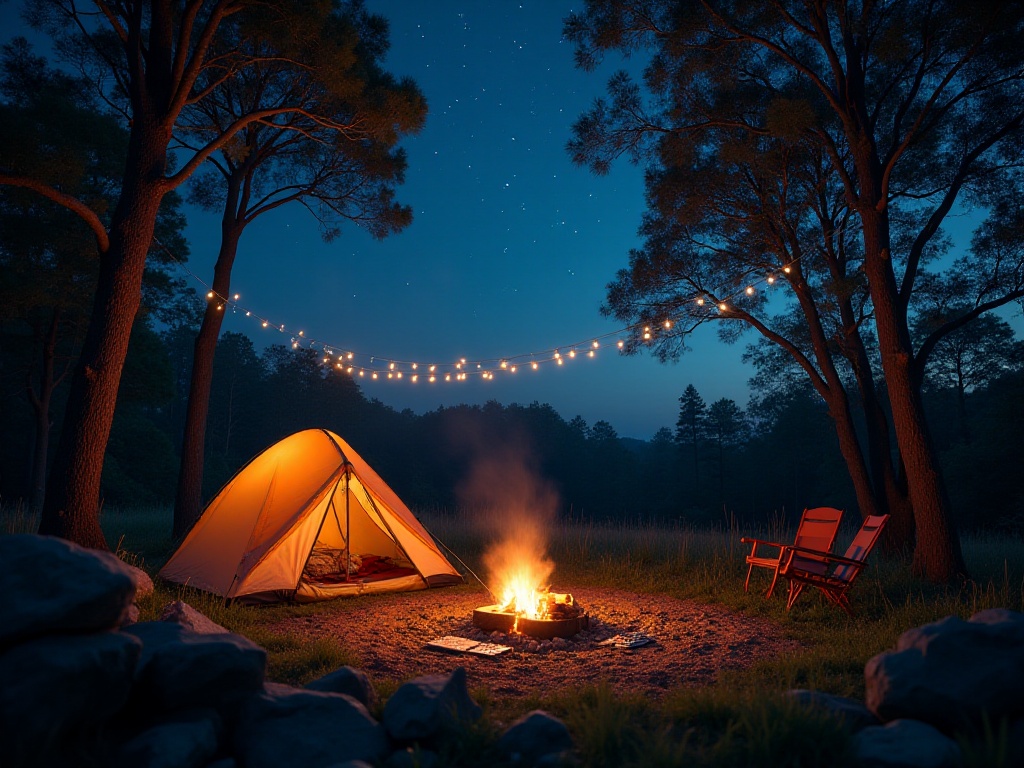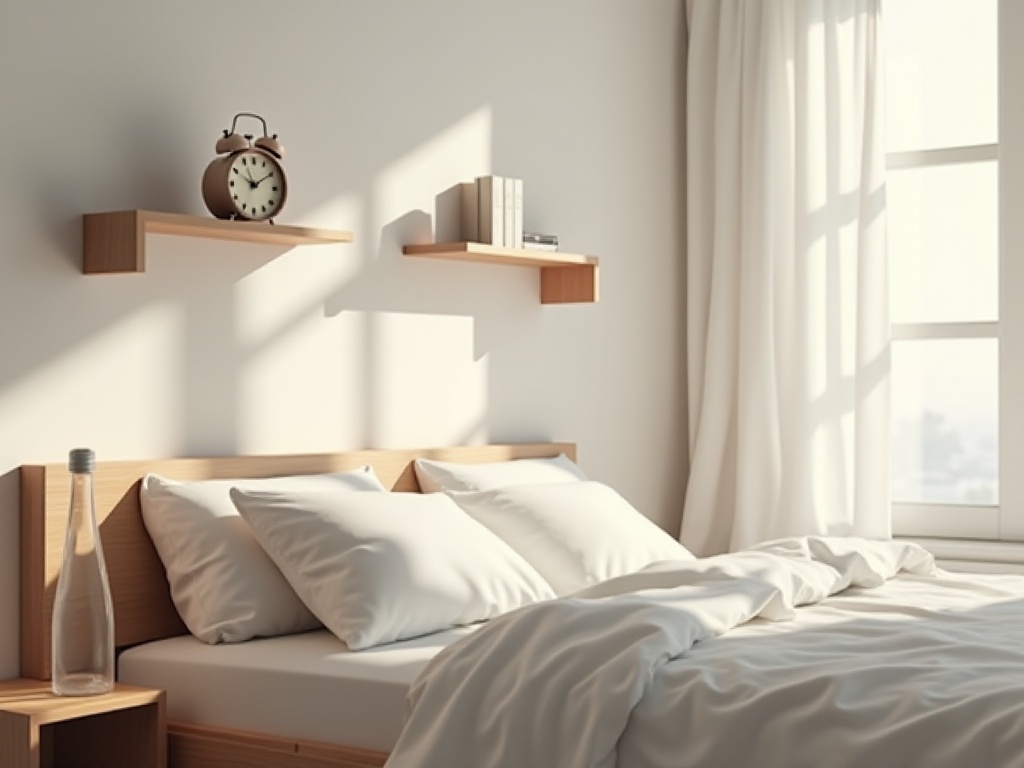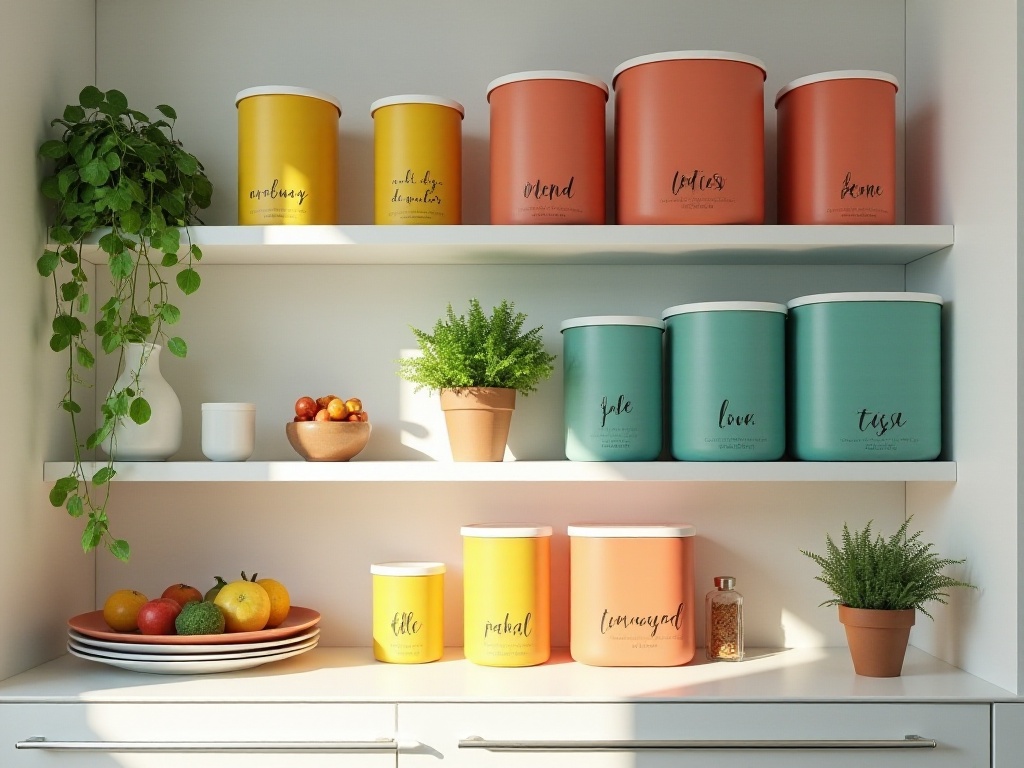Introduction
Living alone is cool, but once you actually start living by yourself, you discover there are many details to handle on your own. Sleeping in late every morning, takeout boxes and delivery packages piling up everywhere, unwashed clothes heaped on chairs, wanting to cook but not knowing where to start... Don't these problems sound super familiar?
As a post-95s person who has lived alone for five years, I've made enough mistakes and learned enough lessons to circle the globe. Today I'll share these accumulated solo living secrets with everyone. I guarantee each tip is practical and will help make your solo life both relaxed and refined.
Morning Routine
I believe many people have experienced the pain of "hitting snooze ten times and still staying in bed" like I did. I used to think waking up early was incredibly painful until I discovered some super effective tricks.
First is the alarm clock method. I place my alarm clock on the desk furthest from my bed with the volume at maximum. This way I must get up and walk over to turn it off, and by the time I've crossed half the room, my brain is mostly awake. There's definitely some resistance at first, but after a week, you'll find this trick is practically a miracle cure for laziness.
Now I wake up promptly at 7 AM every day, and not only do I not feel tired, I actually feel really refreshed. The first thing I do after waking up is open the curtains to let the sunlight in. Then I spend 5 minutes doing some simple stretches, by which time I'm completely awake.
Evening preparation is also really important. I spend 10 minutes before bed preparing for the next day: laying out clothes on hangers, placing my bag, keys, charger and other everyday items on the entryway storage rack. The next morning I can just get dressed and leave, no more scrambling around looking for things.
Another particularly useful habit is preparing a dedicated morning playlist. I've selected some upbeat but not too loud songs to listen to every morning after waking up. The music makes the whole morning atmosphere especially pleasant and improves my mood.

Space Management
To be honest, when I first started living alone, my room was practically a dump. Delivery boxes everywhere, piles of clothes on chairs, desk clutter nearly pushing my laptop off. Later I realized that without proper space management, not only would my quality of life plummet, but my mood would worsen too.
After multiple attempts, I developed a super practical space management system. First is the "positioning method," which means assigning a fixed location for everything in the home. For example, keys go in the special tray by the door, chargers have designated outlets and storage boxes in different rooms, and skincare products are arranged in order of use on the bathroom shelf.
The benefit is you'll never have to search the whole house for things again. Even when you're in a rush in the morning, you can find what you need in seconds. And once you develop the habit of putting things back in their place, the whole room naturally stays tidy.
Categorized storage is also an especially important technique. I divide all items into three categories based on frequency of use: daily necessities like toothbrushes and towels go in easily accessible places; items used several times per week like hair dryers and irons go in slightly more distant drawers; seasonal items like winter comforters and summer parasols can go in the back of storage cabinets.
For small spaces, making good use of wall space is particularly important. I've installed many storage racks and hooks on the walls, which not only store more items but also add layers to the room's appearance. For example, there's a magnetic knife rack in the kitchen that's both practical and stylish.
Another method I find particularly effective is "letting go." Every month I spend a day clearing out items, getting rid of anything I haven't used in three months. This not only keeps the room tidy but also prevents accumulating too many useless things.

Cleaning Tips
Many people think cleaning is particularly troublesome, but once you master the right methods, cleaning can become easy and pleasant.
My secret is integrating cleaning tasks into daily life. For example, quickly scrub the toilet with the brush after using it, squeegee the bathroom dry after showering, wipe down the kitchen counter after cooking. Though each task only takes a few minutes, it keeps the house consistently clean and tidy.
It's also important to prepare basic cleaning tools for each area of the house. I keep dedicated cloths and a small broom in the kitchen, toilet brush and spray bottle in the bathroom, duster in the living room, and small vacuum in the bedroom. This way you can deal with dirt immediately without having to search for cleaning tools.
The choice of cleaning supplies is also crucial. I prefer multi-purpose cleaners that can be used in both kitchen and bathroom, which saves space and reduces expenses. Additionally, choosing portable cleaning tools like foldable mops and handheld vacuums is important as they don't take up much storage space.

Kitchen Management
To be honest, when I first started living alone, I relied on takeout almost every day. But too much takeout is not only unhealthy, it's also hard on the wallet. Later I gradually learned to cook for myself and discovered cooking can actually be quite fun.
First is the issue of ingredient storage. I do my grocery shopping for the week on weekends, and immediately process everything when I get home. Fresh ingredients are washed immediately, cut, portioned and put in the fridge; dry goods are sorted into sealed containers and placed on kitchen shelving.
To avoid wasting ingredients, I keep a list on the outside of the fridge noting what's inside and when it expires. This way I can use ingredients before they go bad, which is both environmentally friendly and economical.
When cooking, I especially recommend the "one-pot" cooking method. This means preparing both main and side dishes in the same pot, saving time and effort. For example, I often make a dish by putting rice and cut seasonal vegetables together in the rice cooker, adding some seasonings, and pressing a button to make a delicious vegetable rice.
Another particularly useful tip is preparing combinations of commonly used seasonings. I put seasonings that are often used together on the same tray, like garlic, soy sauce, and oyster sauce for stir-frying vegetables, so I don't have to search for seasonings while cooking.

Clothing Management
Clothing management is a major challenge of solo living. Many people have experienced this: clothes keep piling up, but every morning it feels like there's nothing to wear.
My solution is adopting a minimalist wardrobe management approach. First is controlling the quantity of clothes, keeping no more than 50 items in the wardrobe. Whenever I buy new clothes, I have to remove an old piece, which keeps the wardrobe tidy and prevents accumulating too many unused clothes.
For storage, I use the "vertical folding method" to store clothes. Placing clothes vertically in drawers not only lets you see all clothes at a glance but also makes them easy to retrieve. Socks and underwear are stored the same way, so there's no more embarrassing situation of not finding matching socks.
When doing laundry, I prepare two laundry baskets, one for light-colored clothes and one for dark colors. This way I don't have to spend time sorting before each wash. I also try to choose clothes in similar color schemes so they can be washed together, saving both time and utilities.
When buying clothes, I pay special attention to fabric choice. I try to choose easy-care, wrinkle-resistant fabrics, which saves time on ironing. These fabrics also tend to be more durable, reducing the frequency of replacement.

Charging Management
In this digital age, everyone has many devices that need charging. Managing the charging of these devices is also an important aspect of solo living.
My approach is to prepare chargers in several fixed locations around the home: a multi-port charger on the bedside table for charging phone and tablet simultaneously; a laptop charger on the desk; and another charger by the living room coffee table for convenient charging while watching TV.
To avoid charger confusion, I mark different chargers with different colored stickers - red for phone chargers, blue for tablet chargers. This prevents grabbing the wrong charger.
Additionally, I keep a portable power bank in my bag to carry with me. This way I don't have to worry about devices running out of power when I'm out.
Final Thoughts
After these years of exploration, I deeply understand that the quality of solo living completely depends on how you manage this small space. Seemingly simple life details, when done mindfully, can make life both easy and high-quality.
Solo living isn't just about living alone - it's a lifestyle choice. Through these living rules, you can turn solo living into something enjoyable, making each day fulfilling and comfortable.
Most importantly, remember: living alone doesn't equal loneliness. On the contrary, it gives us more space to know ourselves, cultivate interests, and live the life we want. When you truly learn to enjoy time alone, you'll find it's actually one of life's most precious gifts.
So don't think solo living is difficult - once you master these tips, you too can make solo living as beautiful as poetry. Let's enjoy this free and comfortable lifestyle together and create our own wonderful lives.
How do you find these suggestions? Welcome to share your solo living experiences in the comments. If you want to learn more life tips, you can follow my updates. Next time we'll talk about how to cultivate hobbies while living alone to make life more interesting.
Remember, living alone isn't loneliness, but another way to enjoy life. Let's make solo living brilliant together.




